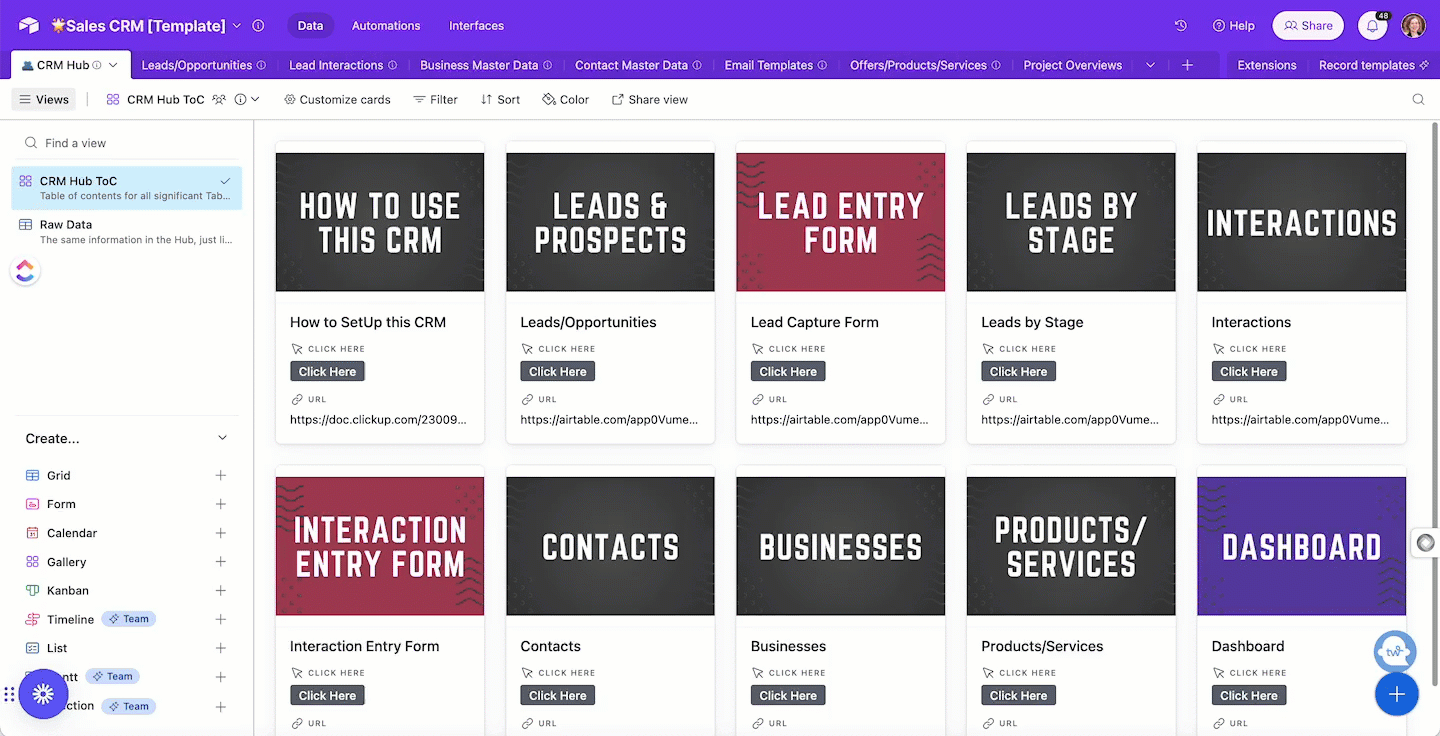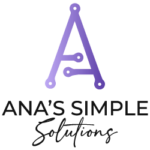Organize your CRM
Organize Your CRM: A Step-by-Step Guide
You know it’s time to organize your CRM. You know that CRM systems are vital, but HOW they are vital to you and your business, you are a bit fuzzy on the details. I was too, up until I started really diving into why and how I wanted my Customer Relationship Management tool to work for me.
The main purpose of CRMs is to manage of customer data, increase productivity, and drive growth in your business.
A CRM can become easily overwhelming and therefore completely ineffective. That’s why I wanted to dive a little deeper into how to organize your CRM.
You will discover best way to go about organizing your CRM by familiarizing yourself with the functionality, segmenting and classifying your types of contacts, maintaining your organization and creating the habit of making your CRM a large part of your business.
Prepare to optimize your customer data management with our comprehensive guide on organizing your CRM!
Understanding your CRM and Its Importance
Effectively organizing customer data, a CRM system plays a significant role in managing customer relationships for small businesses. You can find out more in my last blog post about Choosing a CRM that works for you. Implementing your information and your CRM in the right way will help your small business achieve its sales and marketing goals.
From spreadsheets to email marketing, a good CRM system can provide a centralized hub for sales teams and reps to access client information, track leads, and manage pipelines. If you are going to grow your business outside of referrals from family and friends, having something to organize your information is …. inevitable.
You can start with a spreadsheet if there’s nothing else available, but you would be surprised at the number of inexpensive yet effective CRM systems out there (Namely my own and my colleague’s Notion template!)
Start to organize by familiarize yourself with your CRM
The first step to organizing your CRM for your business is to play with it and figure out how it works. Most CRMs that have a monthly charge have free trial periods to test out their product, and there are many “training” videos out there that can give you a good flavor for the CRMs you are considering. Explore all of its features and functionalities making a list of the aspects that capture your attention. Read the periodic emails the CRMs send out and engage with the community to learn best practices and tips from other users. Additionally, make time to analyze your data so you can really put your CRM data to work in your business strategy—and knock it out of the park when it comes to hitting your business goals.
When I start to use a new tool, the first thing I do is click every part of the tool that I can to figure out where things are and ask myself questions:
- Can I find my way around it easily?
- Does it offer the MAIN features I need in a CRM tool?
- Does it have an easily accessible database and reporting function?
- Does it integrate with other tools or with Zapier/Make?

Organize your CRM by segmentation: Contacts, Organizations, Pipelines, and Stages
The second aspect to organizing your CRM is Segmentation. Segmenting your CRM is the best way to effectively categorize and track contacts. By updating data for organizations within your CRM, you can efficiently manage relationships with different entities.
Setting up pipelines in your CRM facilitates the tracking of sales processes while designing stages provides clarity on the progress of customer interactions. Proper segmentation not only improves data organization and accessibility but also saves you time and effort. Which is the whole point… isn’t it?
Organizing your CRM by Defining and Managing Contacts
When it comes to organizing your CRM, defining and managing contacts is pretty much the most important step.
Collecting essential contact information such as phone numbers and email addresses in your CRM allows for easy access and communication. Make use of data fields and custom fields within the CRM system to store relevant details about each contact, ensuring that all the necessary information is easily accessible and CORRECT.
Knowing who you are talking to, and what their position is in a company gives you a lot of information and detail to CLOSE the sale and make sure you are spending time with the decision-making people… not just their assistant… unless they have the power to purchase what it is your are selling. 🙂
Interactions that you have with these contacts need to be tracked as well, make sure it is something you either can maintain, or easily add. Sometimes there are CRMs that automatically add transactions if they are emailed through, but it needs to be from a specific email address set up to integrate. Make sure you know what the boundaries are for things like this. Sometimes it is better practice to get in the habit of recording transactions than relying solely on automation.

Categorizing and Tracking Organizations
You also should track Organizations. Yes… organizations and contacts ARE different. They can be related to each other, but the organization is a separate entity from the contact. I recommend creating separate categories or tags for different types of organizations in your CRM. This way you can see the types of organizations that you are attracting, as well as those that seem to need your services more.
You can then track documents (Proposals, pricing sheets, contracts) related to each organization.
Also important are social media profiles and website links. Noting beats having all of the pertinent information in one place and easily accessible.
Some CRM systems allow you to assign team members responsible for managing relationships with specific organizations. This may be for larger organizations, but something to also think about when planning for your company’s growth.
Setting Up and Streamlining Pipelines to better organize your CRM
So… now we are getting down to the nitty-gritty. Setting up Pipelines. (Check out this explanation if you are fuzzy on what a Pipeline is in relation to a CRM).
To effectively set up and streamline pipelines in your CRM, it’s definitely important to define the stages of your sales process. This is where I typically have fun by mapping out the “process” of sales with my clients and figuring out what the pipelines (and stages) are by their typical activities.
I like to relate Pipelines to parts of my marketing process to see where my leads are coming from. Facebook page, attended a webinar, downloaded a freebie… as examples

This also helps define the timeline of each prospect into your lead funnel which BOOM helps you figure out what your future workload will be (and also how much moolah you may be bringing in, and who doesn’t love that?).
Additionally, using a CRM to generate visual representations of your pipeline’s performance helps in identifying areas that need improvement. Data analysis anyone?
But let’s chat about that later….
Designing and Navigating Through Stages
So now that you have your Pipeline figured out, it’s time to clearly define what happens that moves a deal (or a potential sale) from one stage to another. Stages and Pipelines can be a little confusing when dealt with together, but I think of a Stage as a part of the Sales process that boosts the individual along to a particular kind of sale.
Example: A pipeline may be a specific service you offer, like a 1-hour coaching call. The client downloads your freebie, signs up for a webinar, and then decided they want to work with you 1:1.
A stage may be a “fit” call to see if you would work well together, then a proposal, then an acceptance of the proposal.
Sometimes the works Pipeline and Stage can be synonymous, just make sure you know how you are organizing your leads and opportunities. (More information can be found here from a respected CRM blog)
Most CRM dashboards allow for an overview of deals in different stages, while notifications and reminders help to stay updated on any stage changes when they happen.
What stages do your opportunities go through to work with you?

How to Keep Your CRM Clean and Organized.

Regularly analyzing and maintaining your CRM data is crucial for its accuracy.
You can’t make good decisions based on bad data. You can in fact make BAD decisions. (or as my son would say “sus” decisions)
This is why I encourage making a habit of cleaning out your CRM… daily at first if at all possible.
Making a habit of making sure the information is clean and up-to-date is the key to making the tech work for you.
Make time to analyze your data.
In order to get the most out of your CRM, it is important to set aside time for analyzing the information.
Consistently reviewing the analytics of your CRM allows you to acquire a deeper understanding of customer behavior, which in turn assists you in making well-informed business decisions.
Start to identify trends and patterns within your data, so that you can optimize your marketing and sales campaigns for better outcomes. (To find out more about what and how to analyze CRM data, I have found this article quite helpful)
Furthermore, analyzing customer data enables you to identify more ways to sell, and perhaps who the types of products and services your customers are interested in. More services = more $$ and happier clients.
CRM analytics can also offer a means to measure the effectiveness of your customer service efforts, especially if you also track your client engagement after their initial purchases.
By devoting time to analyze your data, you can harness its power to propel your business forward.
Managing Duplicates and correcting “bad” data through your workflows
Some of the most common issues within any database, let alone a CRM, are duplicate entries or inaccurate connections.
The best course of action is to correct or train your team to correct these as they see them. That way the issues are not issues anymore. However, if that isn’t something that will happen right away, there are plenty of tools and features offered by your CRM systems to efficiently merge or delete duplicate records. Even in the CRM I created within Airtable as it’s platform, there are ways to identify and merge together duplicates.
If you are finding there is a bunch of “bad data” within your CRM, start a project to identify and rectify the inaccuracies. These could be outdated entries or individuals who are no longer with a company that you have worked with. Sometimes the issues will stand out to you, other times they will not. A little research on the older entries may be helpful (I have found LinkedIn can be helpful for this).
Also, establishing guidelines for data entry can also help reduce the occurrence of duplicates (like searching for an email address prior to adding an individual to the system.) Make it a point to regularly train and educate your team members on how to effectively manage duplicates in the CRM system, whether it be as it happens, or if you go through the tool once a month for “clean-up duty”. By creating searchable fields in your CRM, you can make your data even more accessible and spend less time sifting through information. This allows you to focus more on working leads through your pipeline.

Make organizing your CRM part of your routine.
Time to make it routine, and incorporate management tasks into your or your team’s schedule.
Set reminders and notifications to prompt regular updates and keep your data up to date.
Make CRM usage a priority for yourself and your team!
So, in a nutshell, organizing your CRM is essential for effective customer data management and streamlined business processes.
it’s not difficult to do, but it does take some time and habit formation.
- Familiarize yourself with your CRM and its functionalities
- Define the data that makes up your contacts, organizations, pipelines and stages
- Once set up, create a system that will keep your CRM clean and organized.
Investing in a customized CRM can be worth it, as it allows for tailored solutions that cater to your specific business needs. Take control of your CRM organization and experience improved efficiency and productivity in your business operations.
What are some other common questions when it comes to CRMs?

What are the Common Challenges in CRM Organization and How to Overcome Them?
One way to address the common obstacles faced by CRM organizations is to adopt data validation and de-duplication procedures. Conducting regular audits and cleansing of data helps maintain its accuracy. Simplifying the processes for collecting data can reduce the chances of important customer information being overlooked. Integrating CRM with other business tools and systems enables smooth transfer of data. Additionally, automating data collection and entry for your team can minimize human error and ensure the cleanliness of your data.
How does CRM Software Aid in Better Customer Data Management?
CRM software plays a crucial role in improving customer data management. It centralizes customer information, automates data entry and updates, enables efficient segmentation for personalized outreach, tracks customer interactions, and facilitates effective customer service through historical data.
Is Investing in a Customized CRM Worth It?
Investing in a customized CRM can greatly benefit your business. By aligning the CRM with your specific needs and workflows, it increases productivity and efficiency. Personalized experiences and targeted communications improve customer relationships. Custom access controls enhance data security. Leveraging the full potential of a customized CRM drives business growth.
Looking to learn more?
Check out these blogs:
How to choose a CRM that works for you
Business Documents Every Entrepreneur Should Have
Simple Task and Project Management










